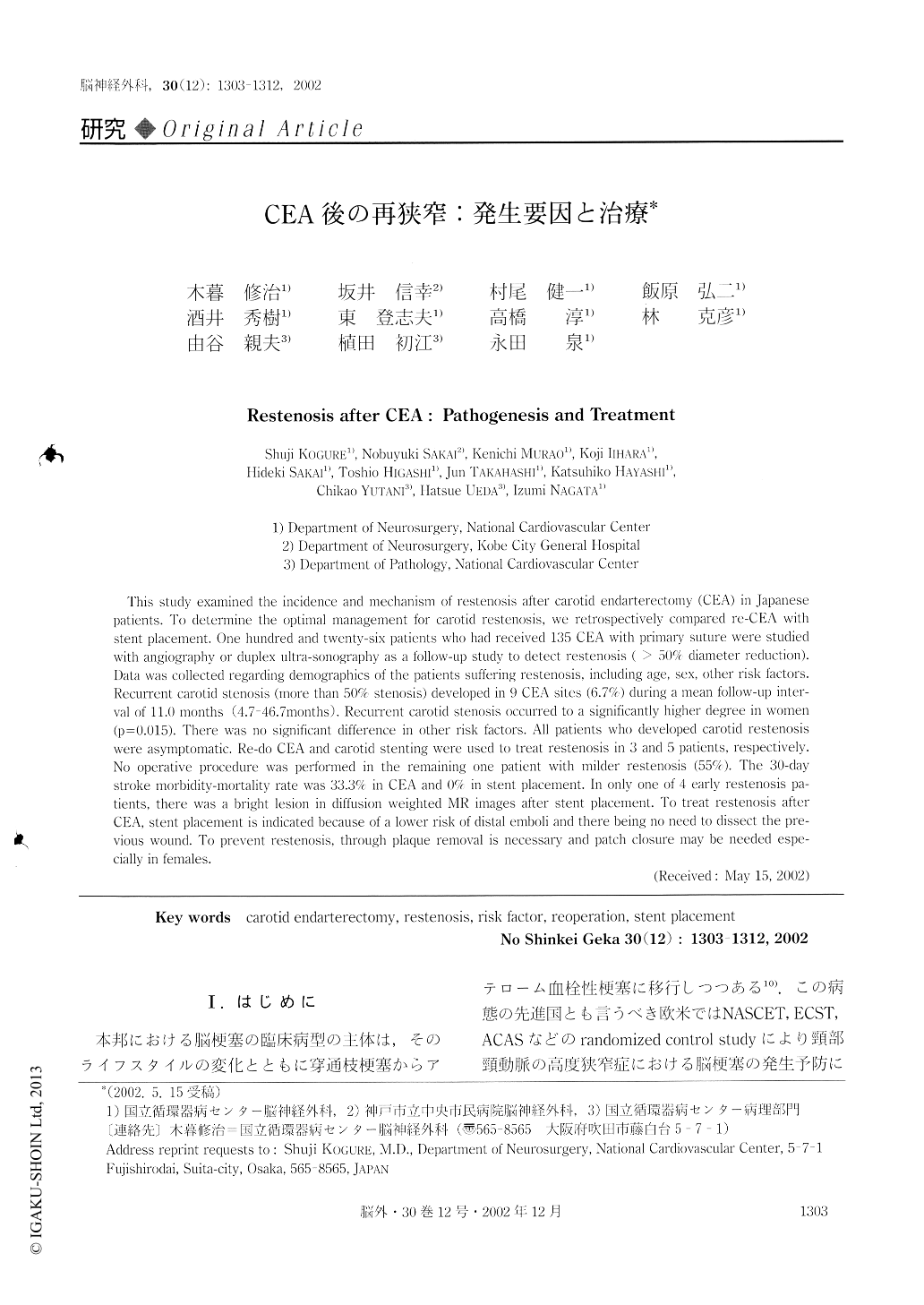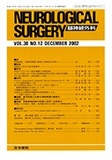Japanese
English
- 有料閲覧
- Abstract 文献概要
- 1ページ目 Look Inside
Ⅰ.はじめに
本邦における脳梗塞の臨床病型の主体は,そのライフスタイルの変化とともに穿通枝梗塞からアテローム血栓性梗塞に移行しつつある10).この病態の先進国とも言うべき欧米ではNASCET,ECST,ACASなどのrandomized control studyにより頸部頸動脈の高度狭窄症における脳梗塞の発生予防にcarotid endarterectomy(CEA)が有効とされ7,8,19),近年日本においても盛んに行われるようになってきた.CEAの有効性は周術期合併症が低率であることが必要条件であり,手術手技の確立が大切であるが,これとならび治療後慢性期に一定の確率で出現する再狭窄も重要な問題であり,狭窄の程度や症状により再治療の対象となっている3,15).
本邦においては,CEA後の再狭窄の報告は未だ散見される程度であり23),日本人特有の再狭窄の原因および治療方法について,ほとんど検討がなされていないのが現状である.当センターでは90年代前半より,頸部頸動脈狭窄症に対しCEAを施行してきた.この経過観察期間中に認められた再狭窄症例につき,その発生原因および治療方法につき検討を行ったので報告する.
This study examined the incidence and mechanism of restenosis after carotid endarterectomy (CEA) in Japanese patients. To determine the optimal management for carotid restenosis, we retrospectively compared re-CEA with stent placement. One hundred and twenty-six patients who had received 135 CEA with primary suture were studied with angiography or duplex ultra-sonography as a follow-up study to detect restenosis (>50% diameter reduction). Data was collected regarding demographics of the patients suffering restenosis, including age, sex, other risk factors.

Copyright © 2002, Igaku-Shoin Ltd. All rights reserved.


